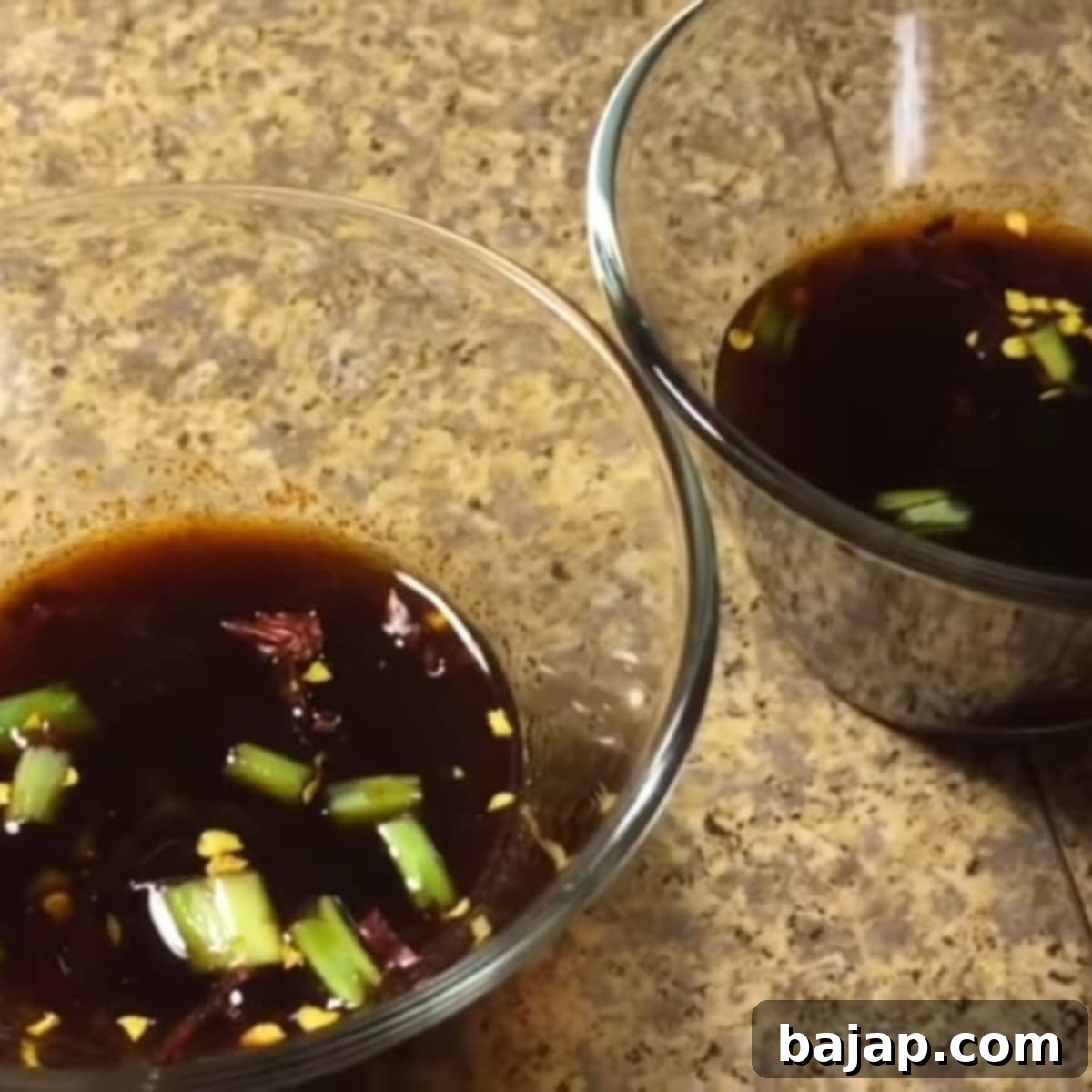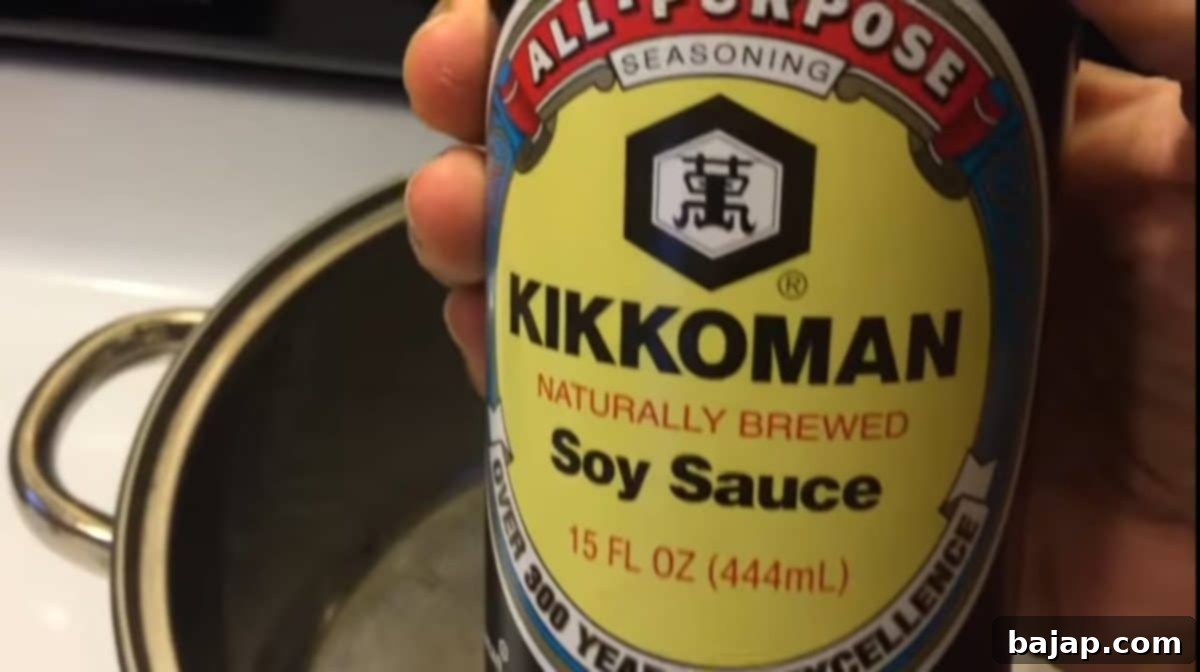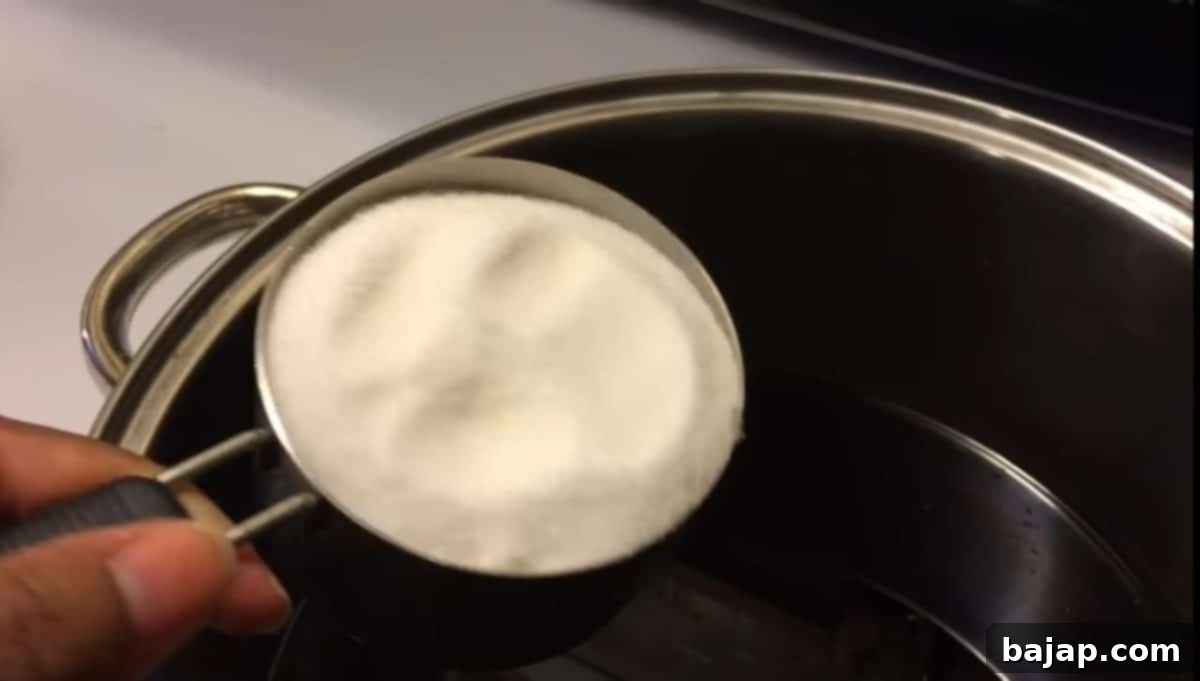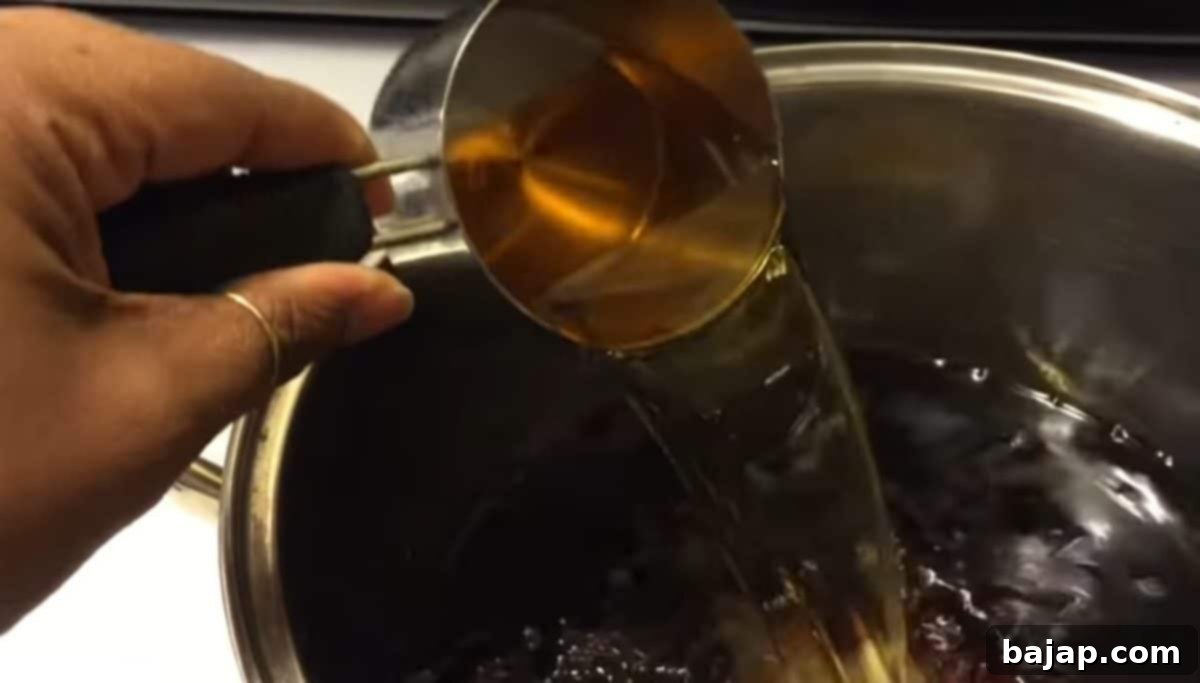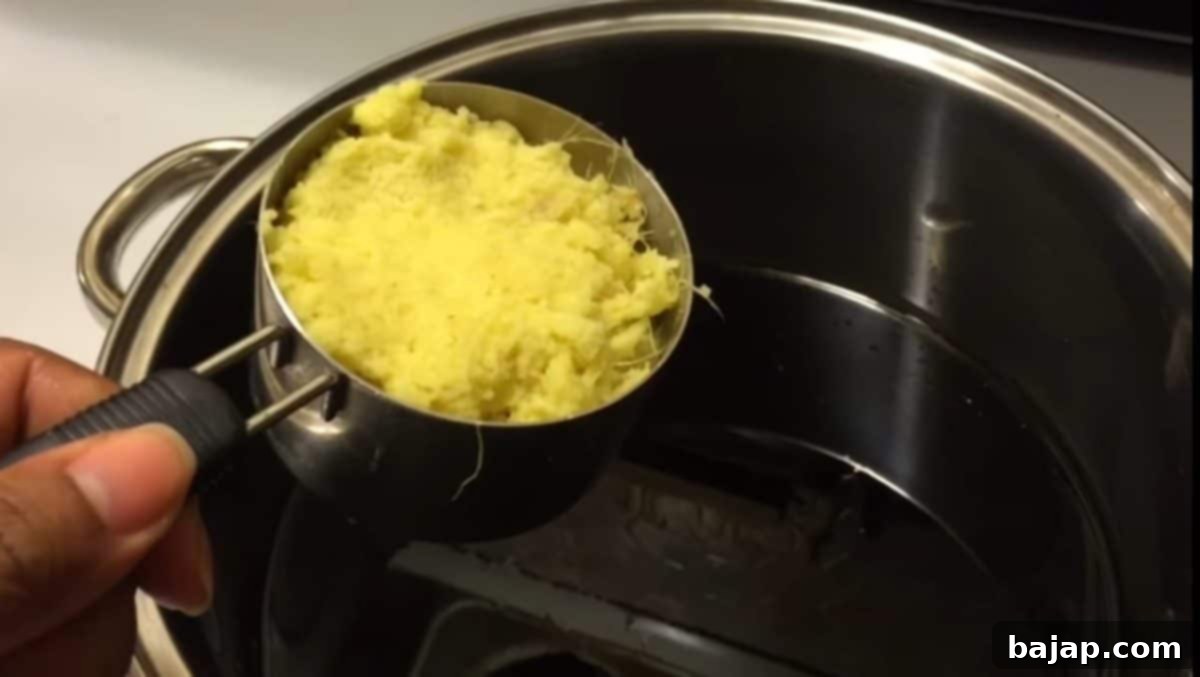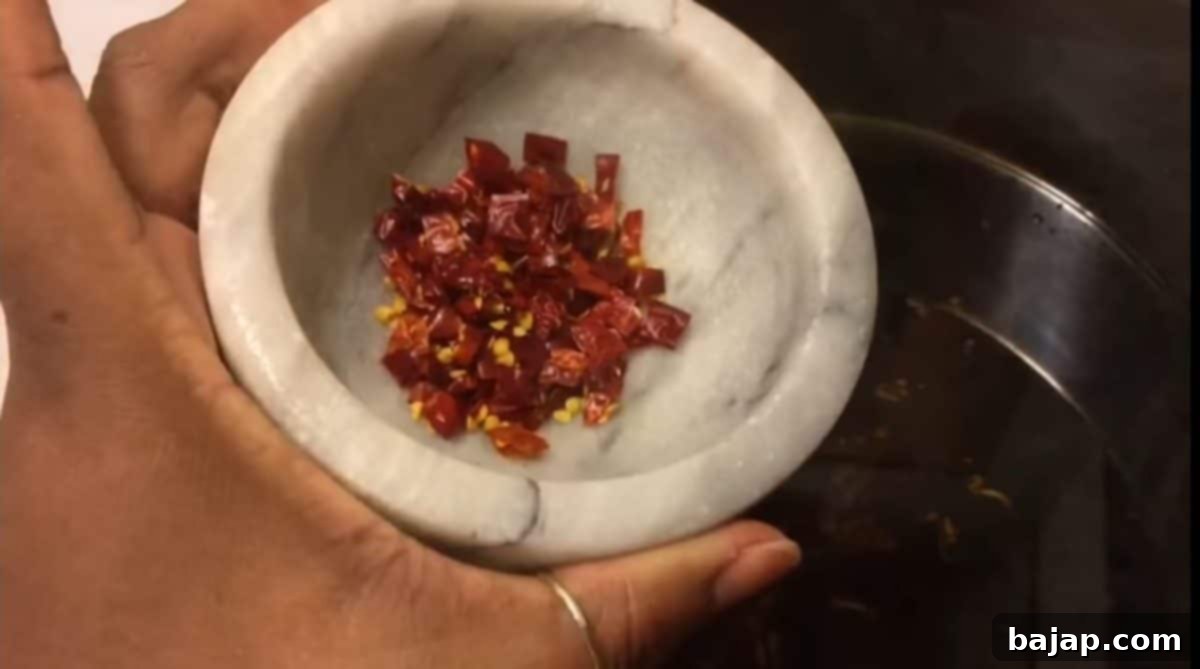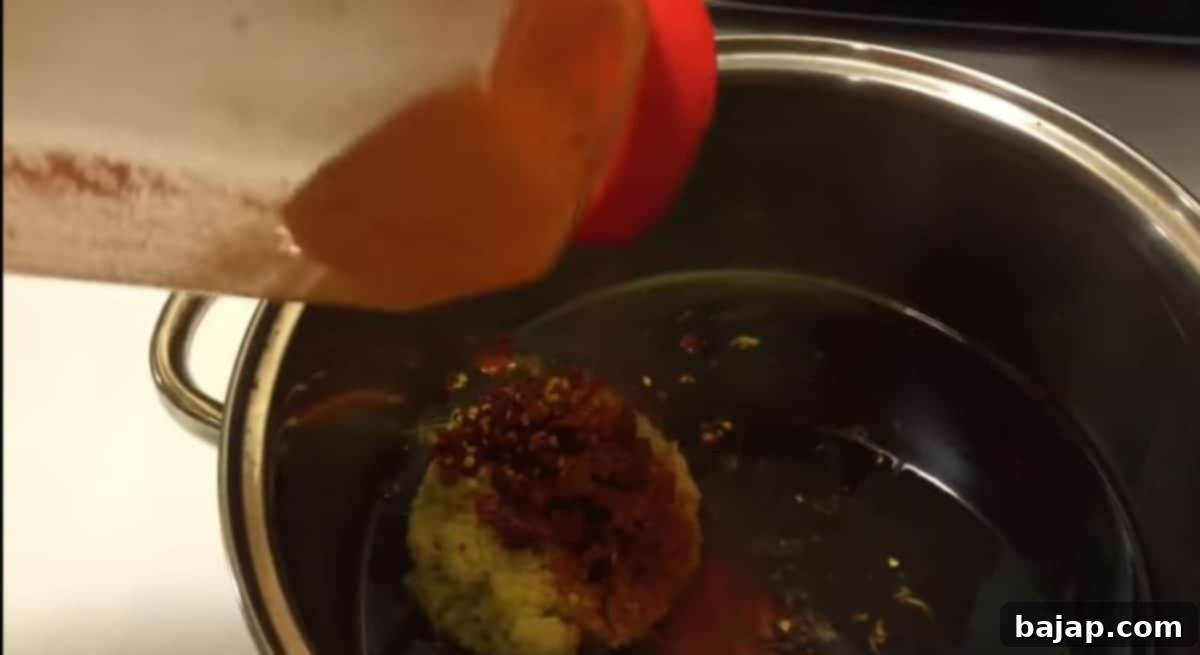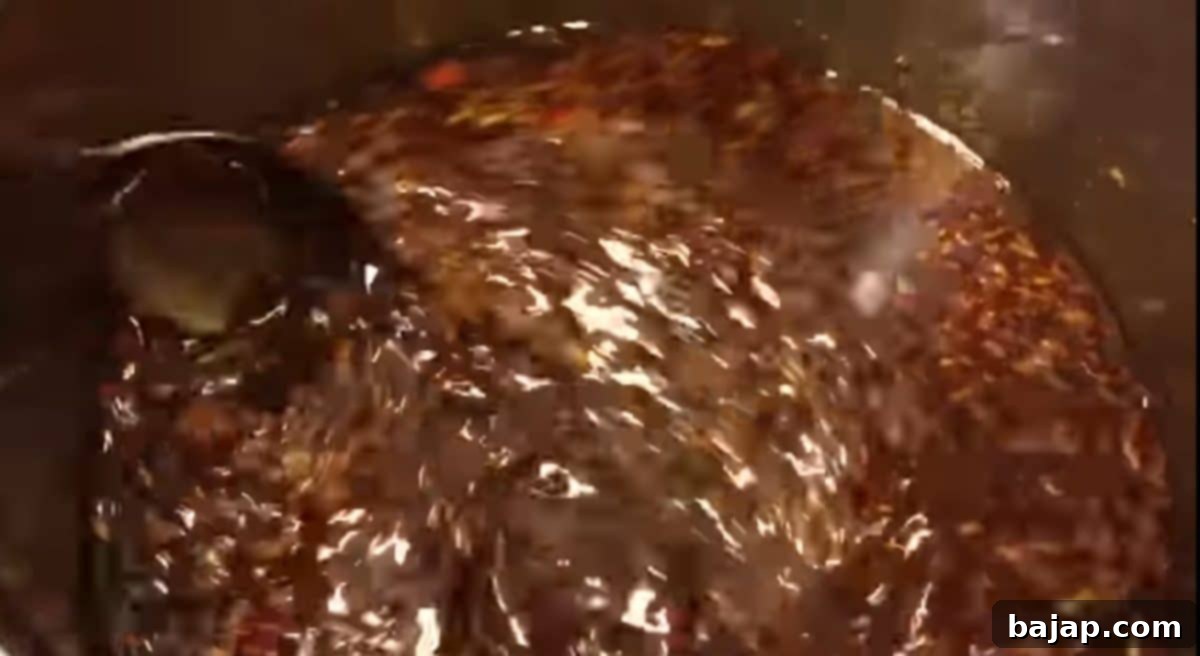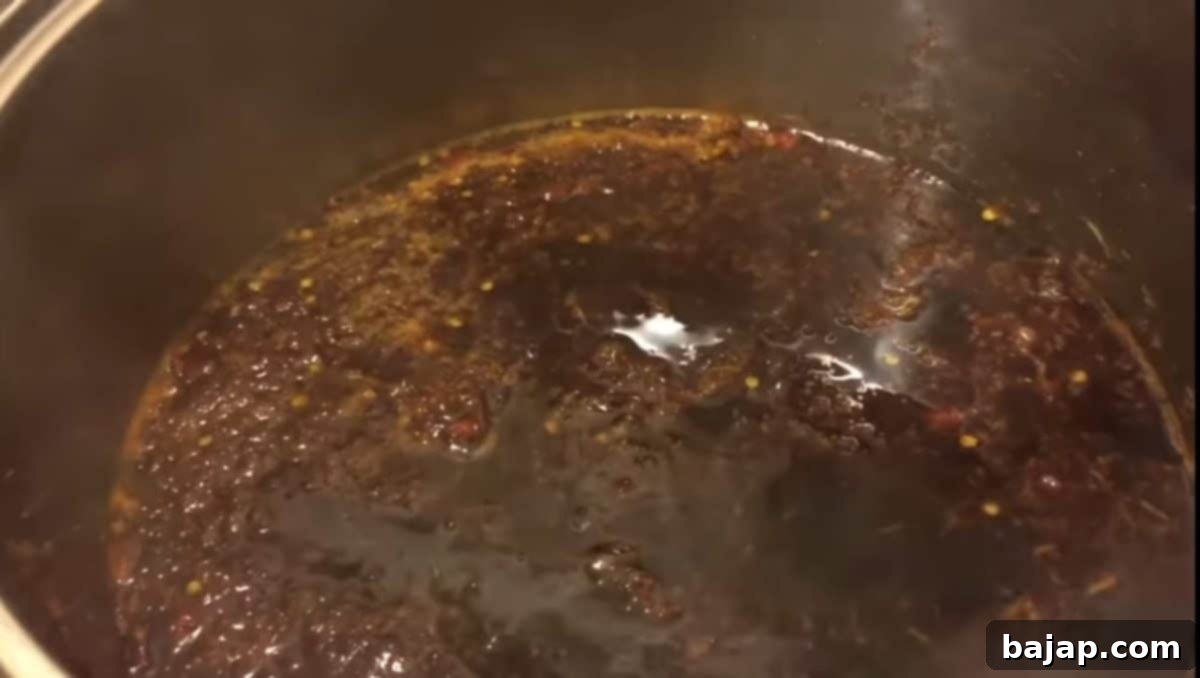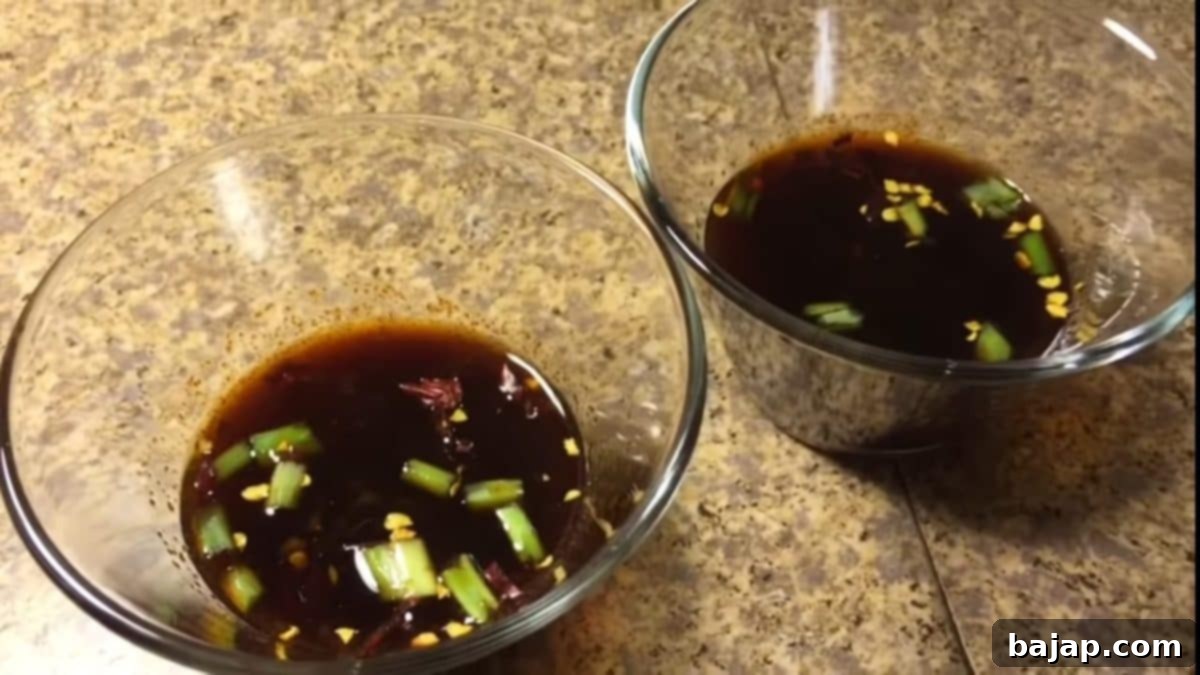The Ultimate Homemade Potsticker Dipping Sauce: A Tangy & Spicy Pf Chang’s Inspired Recipe
Potstickers, also known as pan-fried dumplings, are a beloved culinary delight enjoyed by many across the globe. While the dumplings themselves are incredibly flavorful, a truly exceptional dipping sauce elevates the experience from good to absolutely unforgettable. Forget those bland store-bought options or even the slightly-too-sweet varieties you might find at some restaurants. We’re here to guide you through crafting a homemade potsticker dipping sauce that rivals, or even surpasses, the famous Pf Chang’s version, right in your own kitchen.

This recipe isn’t just another sauce; it’s a carefully balanced concoction designed to provide the perfect tangy, salty, and subtly spicy kick that your taste buds crave. Whether you’re serving up homemade dumplings, store-bought potstickers, spring rolls, or even just using it as a vibrant marinade, this versatile sauce is guaranteed to add that much-needed “zing” to any dish. It’s incredibly simple to make, requiring just a few common pantry staples and less than 30 minutes of your time, making it perfect for busy weeknights or impromptu gatherings. Get ready to impress your family and friends with a sauce that truly makes your potstickers incomparably delicious.
In this comprehensive guide, we’ll share with you the best homemade potsticker dipping sauce recipe. We will walk you through step-by-step guidelines, ensuring that anyone, from a complete beginner to a seasoned home cook, can master it with ease. So, without further ado, let’s dive into the world of flavor and create a sauce that will become your go-to condiment for all Asian-inspired appetizers.
This potsticker sauce recipe is not only simple to execute but also made with wholesome ingredients, making it a healthier alternative to many store-bought options. Follow all the instructions carefully, and prepare to enjoy a truly delightful meal.
A special guest post, thoughtfully written by Eleanor. Thank you so much for sharing your delicious recipe! 💚
🥘 Essential Ingredients for Your Potsticker Sauce
Creating a truly magnificent potsticker dipping sauce relies on a foundation of quality ingredients. Each component plays a crucial role in achieving that perfect balance of salty, sweet, tangy, and spicy. Here’s a closer look at what you’ll need and why it matters:
- Soy Sauce: This is the backbone of our sauce, providing the essential umami and savory depth. We recommend using a good quality regular soy sauce for robust flavor. If you’re mindful of sodium intake, a low-sodium soy sauce is an excellent alternative that won’t compromise on taste, especially when combined with the other vibrant flavors. The specific quantity (15 ounces) is critical to establish the base flavor profile.
- Granulated Sugar: Sugar isn’t just for sweetness; it balances the saltiness of the soy sauce and the tartness of the vinegar, creating a harmonious flavor profile. You can opt for white granulated sugar for a cleaner taste, or brown sugar for a richer, slightly molasses-like undertone. Adjust the amount to your personal preference – some might prefer a sweeter sauce, while others might lean towards less sugar for a sharper finish.
- Apple Cider Vinegar: The star ingredient for that signature tangy “zing”! Apple cider vinegar brings a bright, fruity acidity that cuts through the richness of the potstickers. While white vinegar can be used as a substitute in a pinch, apple cider vinegar offers a more nuanced and complex flavor that truly elevates the sauce. Look for it in any standard supermarket aisle.
- Fresh Ginger Paste: Ginger is indispensable for its pungent, warm, and aromatic qualities. Using fresh ginger paste ensures a vibrant, authentic flavor. To get the best results, peel and finely grate fresh ginger, or use a good quality store-bought paste. The amount can be adjusted based on your love for ginger – feel free to add a little more for an extra kick.
- Red Chilies (Fresh): For a natural and customizable heat, fresh red chilies are perfect. They add a vibrant spice and a subtle fruity note. You can control the level of spiciness by adjusting the number of chilies. If you prefer a milder sauce, use fewer or remove the seeds. For serious spice enthusiasts, more chilies will deliver a fiery punch.
- Cayenne Pepper (Optional): This dry spice offers a clean, straightforward heat that complements the fresh chilies. It’s an optional addition, primarily for those who desire an extra layer of warmth and a more pronounced spicy flavor. Add it cautiously, as a little goes a long way, especially if you’ve already added fresh red chilies.
These ingredients, when combined correctly, create a dipping sauce that’s not only incredibly flavorful but also versatile enough to complement a wide array of Asian-inspired dishes.
🔪 Step-by-Step Guide: Crafting Your Perfect Potsticker Sauce
Making this homemade potsticker dipping sauce is incredibly straightforward. Follow these detailed steps to ensure a flavorful and perfectly balanced result:
-
Step 1: Lay the Foundation with Soy Sauce
Begin by pouring 15 ounces of your chosen soy sauce into a medium-sized mixing bowl. This measurement is crucial as it forms the primary liquid base and flavor foundation of your sauce. Consistency is key here for the best outcome. Feel free to use a low-sodium variety if you’re watching your salt intake; the other ingredients will ensure the flavor remains rich and satisfying.

Starting with the correct amount of soy sauce is key to a balanced sauce. -
Step 2: Sweeten the Deal with Sugar
Next, carefully add one full cup of granulated sugar to the soy sauce. Sugar is vital for balancing the intense saltiness of the soy sauce and the tartness of the vinegar. Your choice between white granulated sugar and brown sugar will slightly alter the final flavor profile – white sugar offers a clean sweetness, while brown sugar adds a deeper, caramel-like note. Adjust this amount based on your preference for sweetness or any dietary considerations.

Sugar perfectly balances the savory and tangy notes in the sauce. -
Step 3: Introduce the Tangy Zing with Apple Cider Vinegar
Now, pour in one cup of apple cider vinegar. This is the ingredient that truly provides the characteristic “zing” and bright, tangy flavor that makes this sauce so addictive. Its fruity acidity is a hallmark of many great Asian dipping sauces. While white vinegar can be a substitute, apple cider vinegar offers a superior, more complex flavor profile that we highly recommend for the best results.

Apple cider vinegar is crucial for the sauce’s distinctive tangy flavor. -
Step 4: Infuse with Aromatic Ginger Paste
Add one cup of fresh ginger paste to the mixture. Freshly grated ginger will always yield the most vibrant and aromatic results, so if possible, peel and grate your own. If using pre-made ginger paste, ensure it’s of good quality. Ginger adds a warm, spicy, and fragrant dimension that is fundamental to the sauce’s overall character. Adjust the quantity to your liking; some enjoy a stronger ginger presence than others.

Fresh ginger paste brings a warm, aromatic depth to the dipping sauce. -
Step 5: Heat Things Up with Red Chilies
To introduce your desired level of heat, add 5 to 6 pieces of fresh red chilies. You have complete control over the spice here: use fewer chilies for a mild sauce, or more for a fiery kick. For an even spicier result, you can thinly slice the chilies or crush them slightly before adding to release more capsaicin. Always start with a conservative amount and taste before adding more.

Red chilies add customizable heat and a fresh spice note. -
Step 6: Optional Spicy Boost: Cayenne Pepper
For those who love extra heat, consider adding two teaspoons of cayenne pepper. This is an entirely optional step, but it provides a sharp, concentrated spice that is distinct from fresh chilies. Exercise caution when adding cayenne, as its potency can quickly overwhelm the other flavors. If you’re unsure, add half the amount first and taste before adding more.

Cayenne pepper is an optional addition for those craving more intense heat. -
Step 7: Thoroughly Combine Your Sauce
With all your ingredients now in the bowl, it’s time to give everything a good, vigorous stir. Ensure that the sugar fully dissolves and all the flavors meld together perfectly. This step is crucial for achieving a uniform taste throughout the sauce. Stir until the mixture is cohesive and the color is consistent. A good stir now prevents uneven flavor distribution later.

Thorough stirring ensures all flavors are perfectly blended. -
Step 8: Achieve Perfect Consistency with a Rapid Boil
Transfer the sauce mixture to a saucepan and bring it to a rapid boil over medium-high heat. This quick boil helps to dissolve any remaining sugar crystals and slightly reduces the sauce, concentrating its flavors. Once it reaches a rolling boil, immediately reduce the heat to low and let it simmer gently for about 10 minutes. This simmering period allows the flavors to deepen and harmonize, creating a more complex and integrated sauce. After simmering, turn off the heat and let the sauce cool completely before serving or storing.

A brief boil and simmer help deepen and marry the sauce’s flavors. -
Step 9: The Final Taste Test & Serving Suggestions
Once your sauce has cooled, it’s ready for the ultimate test: a taste. Dip a potsticker, egg roll, or even a simple wonton into the sauce and savor the flavors. Adjust any elements if necessary (e.g., a pinch more sugar or a dash more vinegar). This versatile dipping sauce can be served immediately or stored in an airtight jar or container in the refrigerator. Properly stored, it will maintain its deliciousness for an extended period, making it perfect for meal prepping or having on hand for spontaneous snacking.

Enjoy your perfectly crafted potsticker dipping sauce with your favorite Asian delights.
These detailed steps are designed for both novice and experienced home cooks to achieve a restaurant-quality potsticker sauce. Don’t hesitate to give it a try – your taste buds will thank you!
💭 Pro Tips for Customizing Your Potsticker Sauce
While our core recipe provides a fantastic base, the beauty of homemade sauces lies in their adaptability. Here are some top tips for personalizing your potsticker dipping sauce, whether you want to add more depth or cater to specific dietary needs:
Enhancements to Consider: Elevating Flavor and Texture
- Aromatics like Green Onions, Garlic, and Sesame Oil: For an extra layer of complexity and fragrance, consider finely mincing fresh garlic and slicing green onions (scallions) to stir into the cooled sauce. A drizzle of toasted sesame oil at the very end can also impart a nutty, deeply aromatic finish that is characteristic of many Asian condiments. These additions significantly enhance the overall flavor profile.
- Honey for Sweet & Savory Balance: If you desire a more pronounced sweet and savory interplay, or a slightly thicker consistency, replacing some of the granulated sugar with honey is a wonderful idea. Honey not only adds a unique sweetness but also contributes a subtle floral note and can naturally thicken the sauce as it cools. Start with a small amount and adjust to your taste.
- Cornstarch for Thicker Consistency: For a sauce that clings more readily to your potstickers, a cornstarch slurry can be used. Mix one teaspoon of cornstarch with two teaspoons of cold water until smooth, then whisk it into the sauce while it simmers. Continue to simmer for another minute or two until the sauce thickens to your desired consistency. Be cautious, as too much cornstarch can make the sauce overly thick or gummy.
- Rice Vinegar: While apple cider vinegar offers a great zing, a splash of rice vinegar can bring a milder, slightly sweeter acidity, often found in traditional gyoza sauces. You could use a blend of both for a unique flavor.
Ingredients to Modify or Avoid: Health and Preference
- Sugar Alternatives: For individuals managing diabetes or those simply wishing to reduce sugar intake, artificial sweeteners (such as erythritol or stevia) or a measured amount of honey can serve as excellent replacements for granulated sugar. Always taste as you go, as the sweetness profiles of alternatives vary.
- Balancing Vinegar: While tanginess is desirable, an excessive amount of vinegar can render the sauce overly tart or acidic. If you find your sauce too sharp, a small pinch more sugar or a tiny splash of water can help balance it out. Always measure vinegar carefully.
- Managing Spice Levels: When preparing the sauce for a diverse group, especially children or those sensitive to heat, it’s prudent to start with fewer red chilies and omit the cayenne pepper. You can always serve extra chili flakes or a side of chili oil for individuals who prefer more heat, allowing everyone to customize their own spice level.
- Low-Sodium Soy Sauce: As mentioned in the ingredients, opting for low-sodium soy sauce is a great way to control salt content without sacrificing the essential savory base, particularly important for those on sodium-restricted diets.
Experimenting with these adjustments will help you fine-tune the recipe to perfectly match your preferences, ensuring every batch of potsticker sauce is just right for you.
🙋🏻 Frequently Asked Questions About Potsticker Sauce
Here are some common questions about potstickers and their delicious dipping sauces:
-
How do you best prepare and enjoy frozen potstickers?
-
Frozen potstickers are incredibly convenient and can be prepared in several delicious ways. The most common and often preferred methods include:
- Steaming: Arrange potstickers in a steamer basket over boiling water and steam until cooked through and tender. This method yields a soft, delicate wrapper.
- Pan-Frying (the “Potsticker” Method): Heat a little oil in a non-stick skillet, place potstickers flat, brown the bottoms, then add a splash of water, cover, and steam until cooked and the water evaporates, leaving crispy bottoms. This is how they get their “potsticker” name!
- Boiling: Similar to pasta, boil them in water until they float and are cooked through. This results in a chewier texture.
- Deep Frying: For extra crispiness, deep-fry them until golden brown.
No matter your cooking method, serving them with a flavorful dipping sauce like this homemade recipe is essential. The tangy and spicy notes of the sauce perfectly complement the savory filling of the potstickers, enhancing every bite and making them truly irresistible. The sauce is the key to transforming a simple frozen dumpling into a gourmet experience.
-
What is potsticker sauce typically called?
-
Potsticker sauce is a broad term, but it’s most commonly known as “Gyoza Sauce” in Japanese cuisine, where gyoza are the equivalent of potstickers. In other regions, particularly in Chinese-American contexts, it might simply be referred to as “dumpling sauce” or specifically by a restaurant name, such as “Pf Chang’s Potsticker Sauce,” due to its popularity. At its core, this versatile sauce typically features a base of soy sauce, vinegar, and a touch of sweetness from sugar, often enhanced with aromatics like ginger and garlic, and a kick from chili peppers. Its primary purpose is to brighten and complement the rich flavors of dumplings and other fried or steamed appetizers, making it a staple condiment in many Asian culinary traditions.
-
Can I make this potsticker sauce ahead of time?
-
Absolutely! This homemade potsticker sauce is an excellent candidate for meal prep. In fact, making it a day or two in advance can sometimes allow the flavors to meld and deepen even further, resulting in an even more harmonious and complex taste. Simply prepare the sauce according to the instructions, allow it to cool completely, and then transfer it to an airtight container. Store it in the refrigerator, and it will keep well for up to 1-2 weeks. Give it a good stir before serving, as some ingredients may settle at the bottom.
-
Is this recipe suitable for vegetarians or vegans?
-
Yes, this potsticker sauce recipe is inherently vegetarian and vegan-friendly, as all the ingredients listed (soy sauce, sugar, apple cider vinegar, ginger paste, red chilies, and cayenne pepper) are plant-based. It’s a fantastic dipping option for vegetable potstickers, spring rolls, or even as a dressing for Asian-inspired salads, making it a versatile choice for various dietary preferences. Always double-check ingredient labels (especially for soy sauce or ginger paste) to ensure they don’t contain any hidden animal products if you have strict dietary requirements.
📖 Homemade Pf Chang’s Style Potsticker Sauce Recipe
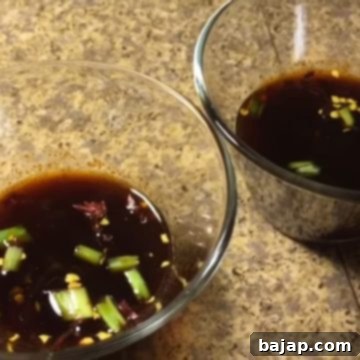
A tangy and spicy dipping sauce for your favorite dumplings.
Recipe Summary
- Author: Eleanor
- Cuisine: Chinese, Asian
- Course: Sauce, Side Dish
- Prep Time: 18 minutes
- Cook Time: 10 minutes (simmer)
- Total Time: 28 minutes
- Servings: 4 servings
- Calories: Approximately 312 kcal per serving (estimate)
Equipment
- 1 Medium mixing bowl
- 1 Saucepan
- Whisk or spoon for stirring
Ingredients
- 15 ounces Soy sauce (low-sodium optional)
- 1 cup Granulated Sugar (white or brown, to taste)
- 1 cup Apple Cider Vinegar
- 1 cup Fresh Ginger Paste (grated fresh ginger preferred)
- 5-6 pieces Fresh Red Chilies (adjust to spice preference)
- 2 teaspoons Cayenne Pepper (optional, for extra heat)
Instructions
- In a medium mixing bowl, combine 15 ounces of soy sauce with 1 cup of sugar. Stir until the sugar begins to dissolve.
- Add 1 cup of apple cider vinegar and 1 cup of ginger paste to the bowl. Mix well.
- Introduce 5-6 pieces of fresh red chilies (sliced or finely chopped, depending on desired heat) and the optional 2 teaspoons of cayenne pepper.
- Stir all ingredients vigorously until everything is thoroughly combined and the sugar is fully dissolved.
- Transfer the mixture to a saucepan and bring to a rapid boil over medium-high heat.
- Once boiling, reduce the heat to low and let the sauce simmer for 10 minutes, allowing the flavors to meld and deepen.
- Remove from heat and let the sauce cool completely to thicken slightly before serving.
- Taste and adjust seasoning if needed. Serve with your favorite potstickers, dumplings, egg rolls, or wontons.
- Store any leftover sauce in an airtight container in the refrigerator for up to 1-2 weeks.
Notes
- Always ensure thorough mixing of ingredients before boiling to prevent uneven flavor.
- Avoid over-boiling during the simmering stage; a gentle simmer is key to a light and flavorful sauce.
- Be mindful of chili and cayenne pepper quantities to prevent the sauce from becoming overwhelmingly spicy or bitter. Adjust to your family’s preference.
Nutrition values are estimates only, using online calculators. Please verify using your own data.
Serving: 1 Serving | Calories: 312kcal | Carbohydrates: 57g | Protein: 11g | Fat: 0.4g | Saturated Fat: 0.04g | Polyunsaturated Fat: 0.1g | Monounsaturated Fat: 0.04g | Sodium: 5962mg | Potassium: 295mg | Fiber: 1g | Sugar: 52g | Vitamin A: 430IU | Vitamin C: 3mg | Calcium: 28mg | Iron: 3mg
Never miss a recipe!
Sign up and let me spoil you weekly with a delicious homemade recipe!
Like this recipe?
Mention @combinegoodflavors or tag #combinegoodflavors!

🤎 You Might Also Like These Recipes
- How to make delicious homemade Chive Sauce in 5 Minutes
- How to make Apfelkren – Austrian Horseradish Sauce
- Bacon Wrapped Venison Tenderloin
- Austrian Liptauer Cheese Spread Recipe
⛑️ Food Safety Guidelines
Adhering to proper food safety practices is paramount when preparing any meal to ensure the health and well-being of everyone who enjoys your culinary creations. Please keep the following guidelines in mind:
- Maintain Minimum Cooking Temperatures: Always cook foods to their recommended minimum internal temperature to destroy harmful bacteria. For most meats, this is 165°F (74°C).
- Prevent Cross-Contamination: Never use the same utensils, cutting boards, or plates for cooked food that previously touched raw meat or poultry without thoroughly washing them first.
- Hand Hygiene: Wash your hands thoroughly with soap and warm water for at least 20 seconds after handling raw meat, poultry, or seafood.
- Time-Temperature Control: Do not leave perishable foods sitting out at room temperature for extended periods (generally no more than two hours) as this allows bacteria to multiply rapidly.
- Constant Supervision: Never leave cooking food unattended, especially when using high heat or frying, to prevent accidents and ensure food is cooked correctly.
- Smart Oil Choices: When cooking with oil, particularly for frying, use oils with a high smoking point to avoid the production of harmful compounds and off-flavors.
- Ensure Adequate Ventilation: Always ensure good ventilation in your kitchen when using a gas stove or high-heat cooking methods to disperse fumes and smoke.
For further comprehensive information on safe food handling, please refer to the official guidelines from Safe Food Handling – FDA.
Serving Up Perfection: Why This Sauce is a Must-Try
This homemade potsticker dipping sauce isn’t just a recipe; it’s an invitation to elevate your culinary creations. Its unique blend of tangy, salty, and spicy notes is a universal crowd-pleaser, reminiscent of the best Asian dipping sauces you’d find in renowned eateries. From bustling street food stalls to elegant dining rooms across Asia, similar flavor profiles are celebrated for their ability to transform simple dumplings into an extraordinary meal. By following our easy steps, you can recreate this authentic taste experience in the comfort of your own home, bringing restaurant-quality flavor to your table without the premium price tag.
We encourage you to experiment and make this recipe truly your own, but always remember one golden rule for exceptional flavor: prioritize fresh, high-quality ingredients. Fresh ginger, vibrant chilies, and good soy sauce make a noticeable difference in the final product, lending a brightness and depth that cannot be achieved with subpar or stale alternatives. The effort invested in selecting fresh components will be amply rewarded with a sauce that truly shines.
So, what are you waiting for? Embrace the joy of homemade cooking and whip up a batch of this incredible potsticker dipping sauce today. Whether you’re hosting a dinner party, enjoying a cozy night in, or simply looking to add a burst of flavor to your everyday meals, this sauce is guaranteed to become a new favorite. We believe food brings people together, and this sauce is sure to spark conversation and delight. Share your creations with us, and if you have any tips, suggestions, or questions, please don’t hesitate to leave a comment below. We love hearing from our community and are always eager to share in your culinary adventures. Happy cooking, and bon appétit!
